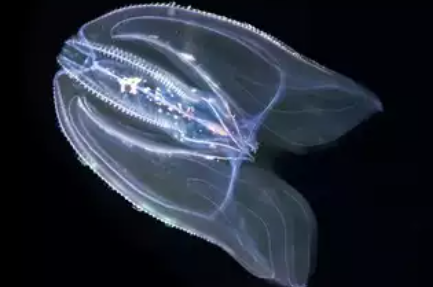Mnemiopsis leidyi: The Time-Traveling Comb Jelly
Recent research has revealed a remarkable phenomenon in marine biology. A newly identified species of comb jelly, known scientifically as Mnemiopsis leidyi, possesses the extraordinary ability to reverse its aging process. This challenges long-standing beliefs about the life cycles of animals.
The Discovery Process
Joan J Soto-Angel, a co-author of the study, encountered an unexpected larval form of a comb jelly in his lab. This larva was an adult that had reverted to an earlier developmental stage. This surprising observation prompted further investigation into the conditions that triggered this de-ageing process.
Experimental Findings
Researchers subjected adult comb jellies to extreme stress. The results demonstrated that these jellies could regress to a larval stage. Over several weeks, they not only changed their physical characteristics but also altered their feeding behavior to that typical of larval forms.
Implications for Biological Research
This discovery raises important questions about animal development and life cycle plasticity. The ability of comb jellies to effectively ‘time travel’ biologically could provide vital information about the evolutionary history of animals. It suggests that such regenerative capabilities may be more widespread across various species than previously thought.
Historical Context of Comb Jellies
Comb jellies are among the oldest animals on Earth, with origins dating back approximately 700 million years. Their longevity and unique biological features make them a valuable subject for studying the evolution of life forms.
Other Species with Similar Traits
The comb jelly is not alone in its ability to reverse development. Turritopsis dohrnii, commonly known as the immortal jellyfish, also exhibits this remarkable trait. These species provide a fascinating glimpse into the potential for biological rejuvenation in the animal kingdom.
Future Research Directions
The findings from this study could have deep implications for understanding the ageing process in humans. Researchers are eager to explore the molecular mechanisms behind reverse development. Investigating the changes in the animal’s nerve net during this process will also be critical for future studies.
This research opens up new avenues for exploration in developmental biology. The potential applications of understanding these mechanisms could lead to important advancements in both scientific knowledge and practical applications in medicine and biology.
Important Facts for Exams:
- Mnemiopsis leidyi: This species of comb jelly can revert to a larval form. It challenges traditional views on animal life cycles and regeneration.
- Turritopsis dohrnii: Known as the immortal jellyfish this species can undergo reverse biological development. Its abilities raise intriguing questions about biological rejuvenation in various organisms.
- Joan J Soto-Angel: He is a co-author of the study on comb jellies. His discovery of a larval form sparked important research into de-ageing processes in marine life.
- University of Bergen: This Norwegian institution is where Soto-Angel conducts his research. It focuses on marine biology and the evolutionary history of various species.
Month: Current Affairs - November, 2024
Category: Science & Technology Current Affairs


